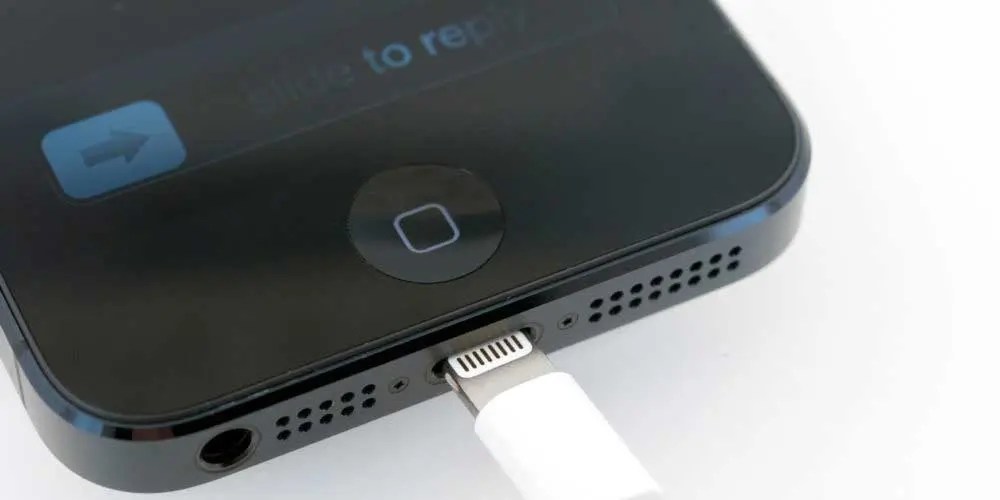How to Fix iPhone Keeps Connecting and Disconnecting From Mac
This article explains how you can troubleshoot when your iPhone (or iPad) repetitively keeps connecting and disconnecting from your Mac.
Author:Daniel BarrettMay 30, 202289.7K Shares1.5M Views

This article explains how you can troubleshoot when your iPhone(or iPad) repetitively keeps connecting and disconnecting when you plug it into your Mac. This can be frustrating because, for example, if you experience this problem, you may be unable to charge your iOS device when you plug your charging cable into a USB port on your Mac.
We’ve received a more positive response by Resetting Location & Privacy than any other trick. So try this first and if it doesn’t work, move down to other solutions.
Before resetting the location and privacy on your iPhone, disconnect the iPhone from Mac. This action will restore all the location and privacy settings to default. Once you do this, each app will ask you for location permission to use location services on a particular app.
- Open the “Settings” app on your iPhone.
- Select “General.”
- Tap “Reset.”
- Lastly, tap “Reset Location & Privacy.”
Please try each step until your issue is resolved.
Check the Lightning Cable or Try Another Cable
The first thing you should check is your charging USB cable for signs of damage. Try using a different cable. Try using a different USB port on your computer. Try unplugging and then replugging.
Also, check the charging port on the bottom of your iPhone or iPad. Remove any debris. You may want to use a can of compressed air.
If you are using a defective, damaged, or non Apple-certified cable, you may see the “Accessory Not Supported” error.
Restart iPhone and Mac
Since the lightning cable is perfectly working, the next step is to eliminate minor bugs from iPhone and Mac that might be causing this problem. A quick force restart will help you fix iPhone that keeps disconnecting and connecting from Mac. Then, depending on your iPhone model, follow the steps.
- Press and quickly release the Volume Up button.
- Next, press and quickly release the Volume Down button.
- Press and hold the Side button until you see the Apple logo on the screen. Then, wait for 15 seconds and use the side button to turn on the iPhone again.
- Press and hold the Volume down button and Power button until the Apple logo appears on the screen.
For iPhone 6S Plus or earlier:
- Press and hold the Home button and Power button and release when the Apple logo appears on the screen.
To restart Mac
- Click on the Apple menu and then select Restart.
Force Restart Your Device.
Here is how:
Different iPad and iPhone models require different steps to do this:
- Face ID iPad Models: press and release the Volume up button, press and release the Volume down button and then press and hold the Top button until your iPad restarts.
- iPhone 8 and later models: press and release the Volume up button and then Volume down button. Then press and hold the Side button until you see the Apple logo.
- iPhone 7 models: press and hold the Side and Volume Down buttons together until you see the Apple logo.
- Home button iPad models and iPhone 6s and earlier models: press and hold the Side and Home buttons together until you see the Apple logo.
Kill Process using Activity Monitor
The Activity Monitor is handy when some application doesn’t work as expected. Similar to how we force close the applications on iPhone, Mac has Activity Monitor that force closes the app and processes. One of the users with the same ‘iPhone keeps connecting and disconnecting’ issues had fixed the problem with this solution.
- Connect iPhone to Mac.
- Go to the “Applications” and select “Utilities.”
- Open the “Activity Monitor.”
- Type in usbd in the search box and force close all the processes by clicking on the (X) symbol.
You can also do it from Terminal,
- Launch “Terminal” from the spotlight.
- Type the command, sudo killall –STOP –c usbd and hit enter.
Reset NVRAM and PRAM on your Mac
Here is how:
- Unplug your device
- Turn off your Mac
- And turn on your Mac and immediately press and hold the Option, Command, P, and R keys together. Keep holding them for about 20 seconds. When you hear a start-up sound, then you can release the keys.
- And your Mac will restart.
As stated above, if you are having this problem with your iPad, the same tips will still help you fix this problem.
Update iPhone and Mac
As Apple always says that to use the iPhone and Mac seamlessly, both the devices should be running on the latest version. Otherwise, you may encounter multiple software issues like this one. So before updating the iPhone, make sure the iPhone has 50% or more battery and is connected to a stable Wi-Fi connection. And for Mac, try to use an Ethernet cable to speed up an update procedure.
On your iPhone:
- Go to the “Settings” app.
- Tap “General.”
- Select “Software Update.”
On your Mac:
macOS Mojave or later
- Click on the Apple menu > System Preferences.
- Next, select “Software Update.”
- Lastly, click on “Update Now.”
For earlier macOS versions,
- Navigate to the “App Store.”
- Click on the “Update” tab and then “Update All.”
If none of the tips help you, you may want to contact Apple. Apple offers live chat support. You may also reserve a Genius Bar appointment.
Editor’s recommendations:

Daniel Barrett
Author
Daniel Barrett is a tech writer focusing on IoT, gadgets, software, and cryptocurrencies. With a keen interest in emerging technologies, Daniel offers expert analysis and commentary on industry trends. Follow him for authoritative insights into the latest tech innovations.
Latest Articles
Popular Articles